World Book Day – Silver Anniversary
Today we celebrate the 25th anniversary of World Book Day, an initiative to promote reading for pleasure and a celebration of books. Here at the University of St Andrews, we’d like to offer some wee presents for the silver anniversary of this global cause, so we’ve dug through the shelves to find some silver-related treasures.
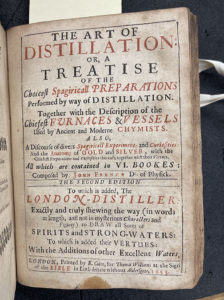
From our Alchemy Collection comes The Art of Distillation, seen here with the title page of the second edition (1653). This work details the properties of various metals and chemicals, and provides recipes for distilling them into medicines or other useful compounds. On pp. 185-187, there is a recipe for a ‘green tincture of silver’. The author describes how this mixture is good for gently purging, but it’s even better with a touch of mercury! There is a warning that it will colour the lips, tongue, and mouth black, though, which should definitely have been a warning that this combination is not fit for human consumption.
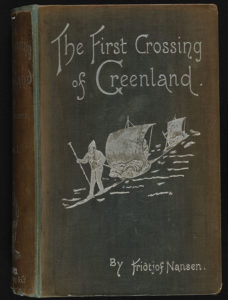
Victorian cloth-bound books, with designs blocked in blind or in colour, are a familiar site in libraries. The art of blocking a book in gold was mastered in the 1830s, but silver was a later development. Although first used in 1839, there were problems with the silver tarnishing on the cloth, which lasted for the next twenty to thirty years. It wasn’t until the 1880s that a reliable silver was developed, which wasn’t silver at all, but aluminium. There are a number of books blocked in ‘silver’ in our collections, but the first English translation of Fridgtjof Nansen’s Paa ski over Grønland (The first crossing of Greenland, London , 1890) caught our eye. He was our University Rector from 1926-1928.
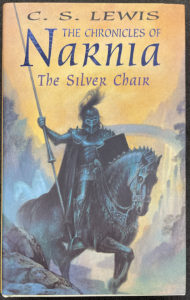
C.S. Lewis’ famed children’s series, The Chronicles of Narnia, has been reprinted again and again since it debuted in the 1950s. The Children’s Book Collection at St Andrews contains a set of the series from 1997, which was added to that named collection in 1999. Here we have the cover illustration of The Silver Chair, wherein characters Jill and Eustace must rescue Prince Rilian from captivity, in which he is nightly tied to a silver chair. The illustration in this edition depicts the silent black knight who appears beside the villain, the Lady of the Green Kirtle.
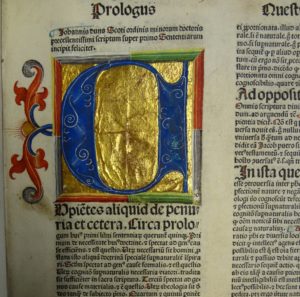
Incunables are books from the very beginning of printing in the 15th century, and they were produced at a time when the medieval practices of decoration and illumination in manuscripts were still appreciated by the discerning buyer. Printed books were still formatted similarly to manuscripts, and the use of pigment and leaf helped readers identify the beginnings of texts, as well as retaining the volume’s status as a luxury item. This beautifully coloured initial from a 1481 edition of the works of Duns Scotus from Nuremburg shows the use of gold and silver in the first letter. Silver is quite rare to find in illumination, as it tends to oxidise, but in this text, which was first owned by St Leonard’s College in St Andrews, the silver retains a shimmer.
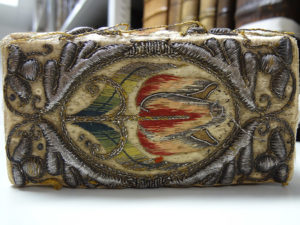
This small dos-à-dos, containing The New Testament of our Lord and Sauiour Iesvs Christ (1627) and The whole book of Pslames (1627), is one of two seventeenth-century embroidered bindings in our collections. The red tulip in the centre of both boards is delicately picked out in silver thread, and sits within a silver arabesque oval. The design may have come from a stock pattern, for an identical binding is found at Princeton University Library, on a 1628 New Testament. Metal threads could be difficult to use in embroidery, and this may indicate that the work was carried out by a professional embroiderer.
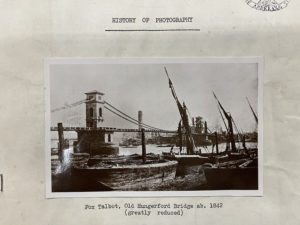
First developed for general use in the 1880s, gelatin silver prints produce stunning greyscale images, which can be explored throughout our Photography and Photo Book collections. These prints use silver in the form of halides which are suspended in a layer of gelatin on fibre-based paper. This is then developed in a three-batch system of developer, stop, and fixer. Here we have a typescript sales catalogue from c. 1945 offering for sale classic images from the history of photography, with the cover being a gelatin silver reprint of the original from 1842.
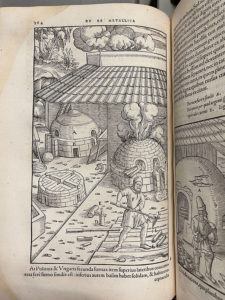
Finishing up with another book from the Alchemy Collection, here we have an image from the copiously illustrated 1561 De re metallica, a treatise on mining and refining metals, which contains many woodcuts throughout depicting mining operations, mostly by Hans Rudolf Manuel Deutsch. This image here describes the separation of silver from gold, and lead from gold or silver. The author, Georg Agricola, lived in Joachimsthal, a region so known for its silver that the coins produced there were called Joachimstaler, shortened to ‘taler’ in German and ‘daler’ in Dutch. It entered English with the name, ‘dollar’ and the name has stuck as a form of currency ever since.
So as we take the day to celebrate all the wonderful things books can do, we hope that this small collection of treasures provides you with a little silvery spark of joy.
Beth Dumas
Briony Harding
Rare Books Team